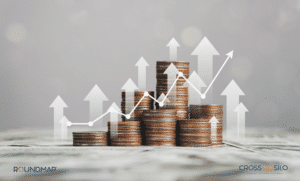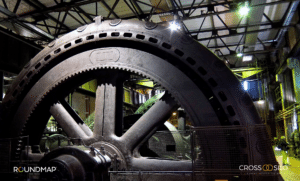For decades, Michael Porter’s Value Chain has been a cornerstone of strategic thinking, guiding businesses to optimize activities for profitability. While undeniably powerful, it reflects a linear, profit-centric worldview that often overlooks the ripple effects of these activities on broader ecosystems and stakeholders. In today’s interconnected and resource-constrained world, this omission has become impossible to ignore.
Enter the Impact Chain—a complementary framework that balances the equation by integrating sustainability, equity, and regeneration into the process of value creation. Together, the Value Chain and Impact Chain form a continuous loop, creating what we call the Flywheel of Shared Success.
What is the Impact Chain?
The Impact Chain reframes the traditional value-driven processes through a lens of long-term sustainability and systemic responsibility. It accounts for the consequences of actions taken at every step of value creation and ensures businesses not only fulfill immediate needs but also contribute to a resilient and equitable future.
Key elements of the Impact Chain include:
- Amplifying Positive Impact: Designing processes that contribute to societal, environmental, and economic well-being.
- Mitigating Negative Effects: Taking responsibility for any adverse outcomes and embedding strategies to address them (e.g., reducing waste, ensuring fair labor practices).
- Circularity and Regeneration: Moving away from extractive, linear practices to cyclical systems that renew resources and minimize harm.
- Stakeholder Inclusivity: Broadening the focus from customers alone to all stakeholders—employees, communities, ecosystems, and future generations.
- Sustainable Growth: Prioritizing equitable profit distribution and long-term prosperity over short-term gains.
How the Impact Chain Complements the Value Chain
- Are the resources used in value creation sourced responsibly?
- Does the value delivered consider the well-being of all stakeholders, not just shareholders or customers?
- What are the unintended consequences, and how are they addressed?
While the Value Chain focuses on what and how to deliver value profitably, the Impact Chain explores the why and so what of value creation—ensuring that profit is pursued responsibly and inclusively.
A Continuous Loop: The Flywheel of Shared Success
When combined, the Value Chain and Impact Chain form a self-reinforcing loop:
- Value Creation: Businesses design and deliver solutions that meet customer needs profitably.
- Value Capture: Profit is reinvested equitably, ensuring financial health and the resources needed for future cycles.
- Impact Creation: Positive outcomes are amplified, while adverse effects are mitigated.
- Impact Capture: Lessons learned are fed back into the system, informing the next round of value creation.
This cycle represents a holistic approach to business—where every action or decision considers both its immediate output (value) and its systemic ripple effects (impact). The result is a Virtuous Cycle of Shared Success that drives responsible growth, equitable prosperity, and sustainable progress.

Why This Matters Now
In an era of increasing complexity, climate urgency, and stakeholder activism, businesses can no longer afford to focus on short-term profits alone. The Impact Chain provides the missing piece in the puzzle, ensuring organizations align their operations with the needs of the planet, people, and future generations.
By integrating the Value Chain and Impact Chain into the Flywheel of Shared Success, businesses can move beyond merely surviving in today’s competitive landscape to thriving in tomorrow’s interconnected world. This is not just a framework for strategy—it’s a call to action for leaders who seek to leave a legacy of shared success.
Conclusion: Rethinking Business as a Force for Good
The Impact Chain is more than an addition to the Value Chain; it is its sustainable counterpart, ensuring that value creation is not only profitable but also purposeful. Together, they form a powerful cycle that redefines success, helping businesses thrive in ways that are equitable, regenerative, and aligned with the greater good.
It’s time to embrace the Flywheel of Shared Success—because every action, and every inaction, has consequences. How we choose to act today will define the future we build tomorrow.
The featured image is a view of the Clyde Arc Bridge on the River Clyde, Glasgow, Scotland, reflecting in the water. This is to say that every action (traffic crossing the bridge) has consequences, causing a ripple effect.
Continue Reading on Striving & Thriving:

More Than Crumbs: The Case for True Value Creation
For decades, shareholder primacy has dictated corporate decision-making, driving businesses to prioritize short-term profits and disproportionate returns to shareholders over long-term sustainability and stakeholder value.

Beyond Extraction: Why Regenerative Business is the Only Way Forward
The RoundMap’s Regenerative Business Framework proposes a dual-cycle approach to business: one focused on value creation and another on impact. However, reality presents us with

RoundMap Regenerative Business Framework: Empowering the Present while Building the Future
Executive Summary The Regenerative Business Framework addresses the critical need for businesses to move beyond mere profitability toward regenerative practices that drive long-term growth and

Rethinking the Flywheel: Why Amazon’s Misinterpretation Misses the Mark
The concept of a flywheel, as originally designed, was never about spinning faster to achieve exponential growth. It was about stabilizing energy output—ensuring a steady,

From Striving to Thriving: How Amazon is a Strive-Driven Giant Failing to Thrive
Amazon has become synonymous with business success, often hailed as a master of efficiency, customer obsession, and innovation. At the heart of its growth strategy

The Flywheel of Shared Success: How Impact Drives Sustainable Growth
In the fast-paced world of business, the focus often rests on immediate value creation—developing products, closing deals, and driving revenue. While these activities generate vital

The Reciprocity Effect: How Giving Back Completes the Cycle
Ten years ago, I began developing the Customer Lifecycle—a map of frontline activities—because I saw how social media was reshaping the marketplace. It wasn’t just

Impact Strategies to Amplify Value and Mitigate Harm Across Stakeholders
What if doing the right thing wasn’t just a moral choice but a strategic one? What if amplifying your organization’s positive impact while mitigating harm

From Extraction to Contribution: Thriving Together with Shared Success
The Flywheel of Shared Success is designed to demonstrate that staying within the boundaries of responsible growth doesn’t mean limiting our ambitions—it means channeling them

The Twin Engines of Progress: Returns on Value and Impact
At the heart of the Flywheel of Shared Success lies the powerful interplay between Value Returns and Impact Returns, both of which operate on the

From Hopping for Cash to Building Bridges: Why Self-Interest Alone Can’t Sustain Shared Prosperity
What we’re proposing with the Flywheel of Shared Success is nothing short of a call to confront and correct our deeply flawed execution of Adam

If Adam Smith would still be alive, how would he perceive our modern economic systems?
If Adam Smith were to assess the state of our modern economic systems, his critique would likely be sharp yet eloquent, reflecting the moral gravitas
Author
-
Edwin Korver is a polymath celebrated for his mastery of systems thinking and integral philosophy, particularly in intricate business transformations. His company, CROSS/SILO, embodies his unwavering belief in the interdependence of stakeholders and the pivotal role of value creation in fostering growth, complemented by the power of storytelling to convey that value. Edwin pioneered the RoundMap®, an all-encompassing business framework. He envisions a future where business harmonizes profit with compassion, common sense, and EQuitability, a vision he explores further in his forthcoming book, "Leading from the Whole."
View all posts Creator of RoundMap® | CEO, CROSS-SILO.COM





